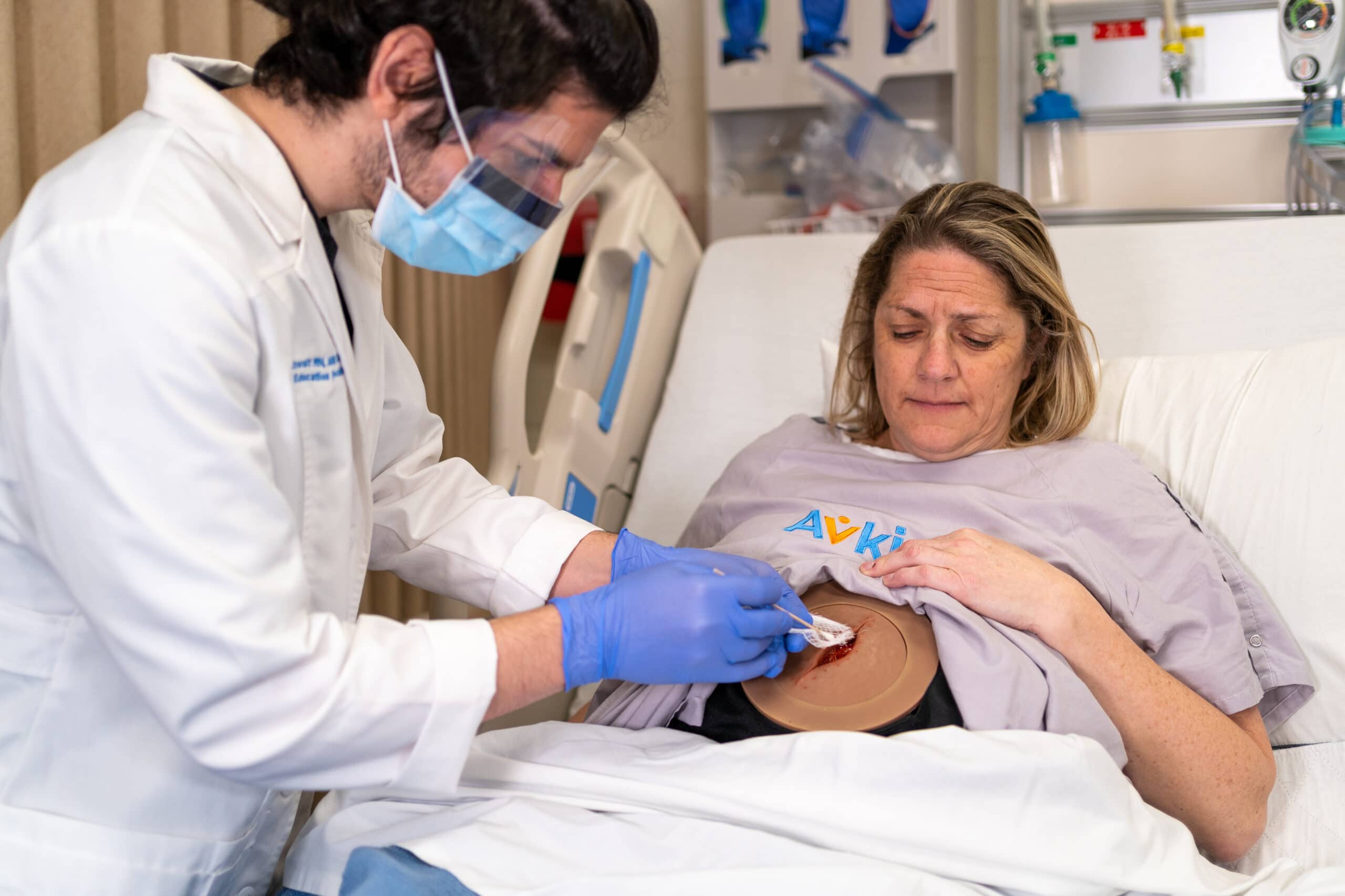An Academic Review – Gaps in Wound Care Education

Pressure injuries have long been a problem plaguing healthcare systems. With many schools reducing time spent on wound care education, and some eliminating it altogether, the newest generation of nurses may have never encountered wound care at all in their education. Hospitals can take steps to address this with lifelike continuing education.
With the older adult population increasing, there is also an increase in chronic conditions that lead to pressure injuries developing. In a 2017 study by Laynette Goudy-Egger, DNp, FNP-BC,CWS-BC, and Karen S. Dunn, PhD, RN, FGSA, the authors tested whether or not continuing education increased a nurse’s confidence and knowledge in diagnosing, treating, and managing open wounds[1]. Using pre-tests and post-tests, they discovered that while every nurse believed chronic wound care was an important health concern, more than 70% of those in the study said there were not adequately prepared to manage a chronic wound. After the workshop, nurses in this study demonstrated an increase in knowledge regarding evidence-based chronic wound assessments and chronic wound care management for a variety of chronic wound types.
While traditional workshops or training can be beneficial, a study by Donna W. Roberson, PhD, FNP-BC, Janice A. Neil, PhD, RN, and Elizabeth T. Bryant, MSN, RN found that the more realistic a simulation is, the better the learner outcomes[2]. While this seems obvious, the difference made by incorporating small sensory details was astonishing. By simply adding an odor to a wound care simulation (cheese, in this instance), 90% of the students in the experimental group reported they were able to identify patient problems compared to just 62% of the control group. Furthermore 98% of the experimental group were able to incorporate different theories into practice, versus just 74% of the control group.
With increased competition for quality clinical sites, simulation is a real-to-life, repeatable alternative to ensure learners of all skill levels are prepared and confident in real life. Avkin’s new Avwound wearable device can add an unprecedented level of realism to your wound care simulation and education efforts. To learn more about it, and to see a short video demonstration, visit https://avkin.com/avwound-wound-simulator/
References
- Goudy-Egger, L., & Dunn, K. S. (2018). Use of Continuing Education to Increase Nurses’ Knowledge of Chronic Wound Care Management. The Journal of Continuing Education in Nursing, 49(10), 454–459. https://doi.org/10.3928/00220124-20180918-05
- Goudy-Egger, L., & Dunn, K. S. (2018). Use of Continuing Education to Increase Nurses’ Knowledge of Chronic Wound Care Management. The Journal of Continuing Education in Nursing, 49(10), 454–459. https://doi.org/10.3928/00220124-20180918-05
